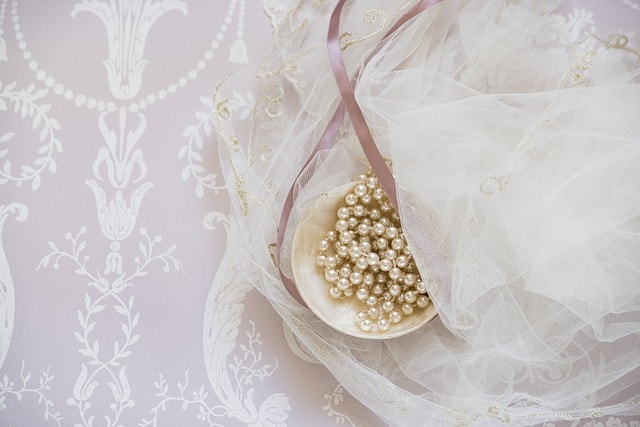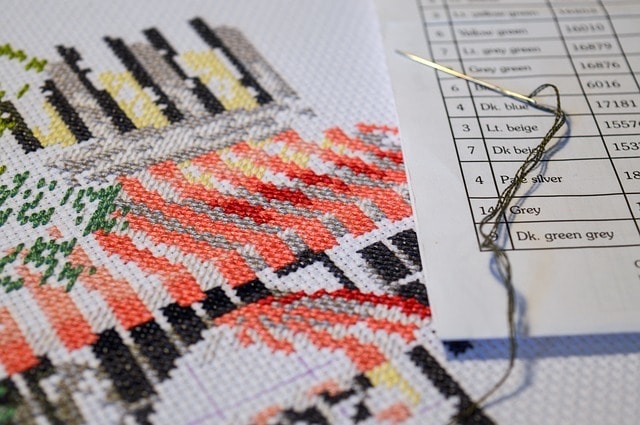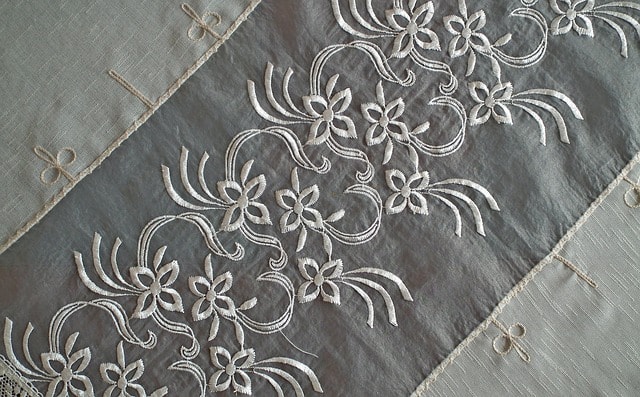Understanding The Different Embroidery Fabrics
If you want to make a piece of art you’ll first need a couple of things. Inspiration, hard work, creativity and last but not the least, you’ll need to achieve a fusion of two or more things into one that surpassed the original concept of those initial two objects.
Painters do that by combining water and pigments, sculptors do that by combining clay, water and fire, while musicians combine various sounds produced by various music instruments, all into one thing. Art.
So, since embroidery is also a form of art, maybe a bit neglected or overlooked but art nonetheless, those rules also apply on it as well. An embroiderer strives to achieve a fusion of fabrics, design and plain old threads.
But that’s not an easy task at all. Choosing an appropriate kind of fabric, an appropriate kind of thread and coming up with an adequate design is quite difficult in itself. Well how can one do all that properly? By understanding the different kinds of embroidery fabrics of course.
Let’s do just that, let’s learn all that together, right here and right now.
Table of Contents
Embroidery – marriage of fabric and design

And as old people like to say, marriage isn’t a journey filled with candy and joy, it has a lot of ups and downs, good places and bad places, right decisions and wrong decisions. People are different and we all have our flaws and virtues, so resolving differences between couples takes a lot of hard work. If you want a good marriage, you’ll need to put a lot of effort into it. But it will be worth the trouble.
Embroidery is pretty much the exact same thing. You may choose just the right fabrics and come up with a design that will look perfect with it. So you start combining the two and surprise surprise, it’s not working out.
Maybe the fabric is too thick or dark so the design gets lost in it and disappears. Maybe the design just doesn’t end up looking the way you wanted it to look like. What then?
Evil tongues would say that you didn’t think things through well enough and in all honesty, that may be true. But it is as it is, so you can either decide to work with what you’ve got and improvise or just throw everything away and start over with a different fabric and a different design. But giving up is no fun.
Bottom line is this, with embroidery, you can either score a bullseye and come up with a perfect match of design and fabric in first go. Or you can miss the mark from the start but with enough perseverance and patience still hit the center eventually.
Best Fabrics For Machine Embroidery
Although we can’t be of much help when it comes to design because you need to come up with that yourself and show your creativity, we can help you to select a proper kind of fabrics for your embroidery projects.
We’ll first cover some materials that are adequate for at home work done with the help of a embroidery machine for a small business since most people use them nowadays and prefer them over manual work with a thread and a needle.
Whether we’re talking about machine or hand embroidery, an appropriate fabric is one that’s sturdy enough and tightly weaved. Since their fibers aren’t woven like the ones in synthetic materials but are instead positioned both vertically and horizontally, natural fabrics tend to be the best choice for embroidery enthusiasts. You won’t need to worry about accidental perforation of threads that will eventually lead to tears or hole appearing because your needle will be able to pass between them without any troubles.
Cotton
Now let’s take a look at some of those natural fabrics fit for embroidery work. First up we have cotton. But not just any cotton, we’re talking about 100 percent quilting cotton. You might think than cotton is cotton and that it doesn’t matter which kind you’ll use. Well, that’s not quite true. For example, heirloom cotton is much lighter that its quilting counterpart and it’s also pretty sheer so working on it with a machine or by hand may turn out to be problematic due to the fact that threads tend to show through more often than not. Canvas cotton is also a very good choice due to its utility like characteristics. Caps and hats for example are one of the most durable examples although they definitely require special heavy duty embroidery machine for hats. Grocery shopping is way easier when you have a bag made from canvas cotton to carry all that stuff without worrying will the paper bag break or not. And when you add a neat embroidery design onto it, you’ll love your handy bag even more.
Linen
Next up we have another great kind of material for embroidery and that’s linen. It’s lighter than cotton but it’s also more textured which makes it 30 percent stronger. Durable and tough, linen is a material that can last for ages.
Silk
Silk is our next pick and that was expected. Made with the help of little silk bugs that produce it, silk is a symbol of class, elegance and luxury. Due to its fine and delicate nature, a lot of people make the wrong assumption that it’s weak and fragile. In fact it’s the actual opposite because silk is indeed a quite strong material. So much that it was even used as a kind of undergarment armor in the far East back in the old days. Much like chainmail was used in Europe much later. And chainmail is made from steel.
Wool
Another suitable material for embroidery is wool. Any kind of wool will do because they all perform great in this area. Strong enough and deep enough for showcasing embroidery without swallowing up the stitches and making them invisible. It also doesn’t need to be hemmed so decorative projects end up looking beautiful while requiring less time to finish them. Blends are also appropriate for embroidery if they’re strong and sturdy enough. Mix of cotton and linen is a blend that works like a charm.
Best Hand Embroidery Fabrics

If you’ve decided that you want to do things the old way, with a thread and a needle in your hands, your best bet are evenweave fabrics. These fabrics can be made from a lot of things, as long as they end up in a woven state. They have an even number of embroidery threads running in both directions which means they are soft and even and wear very well. Tightly woven evenweave fabrics are best suited for hand embroidery work. Let’s have a look at some of them.
Aida cloth
Affordable, easily available and beginner friendly – yeah, you guessed it – it’s Aida cloth. It has weaves that have a group of threads with holes at the center.and when sewn on, stitches wrap themselves around the threads. Some of its positive characteristics are the fact that it comes in a wide variety of colors and that it allows you to see where the thread goes easily which improves your accuracy.
Fiddler’s cloth
Another good fabric for hand embroidery is Fiddler’s cloth. It’s a blend of materials and it has similar properties like the aida cloth. Rough texture surface of this fabric makes it an attractive choice for most people who like creating decorative kind of work.
Jobelan
Jobelan is a blend of natural cotton and synthetic polyester. It’s a heavier type of evenweave fabric and it has a high count of weaves ranging from 16 to 32 counts. Due to the fact that its every other hole is larger than the previous, this material unfortunately tends to wrinkle more, compared to other fabrics.
Conclusion
There you have it, we showed you to the ropes and now the rest is up to you. So will it be a hand or machine embroidery? And will it be a good marriage of fabric and design?
You’ll be the one who decides.


